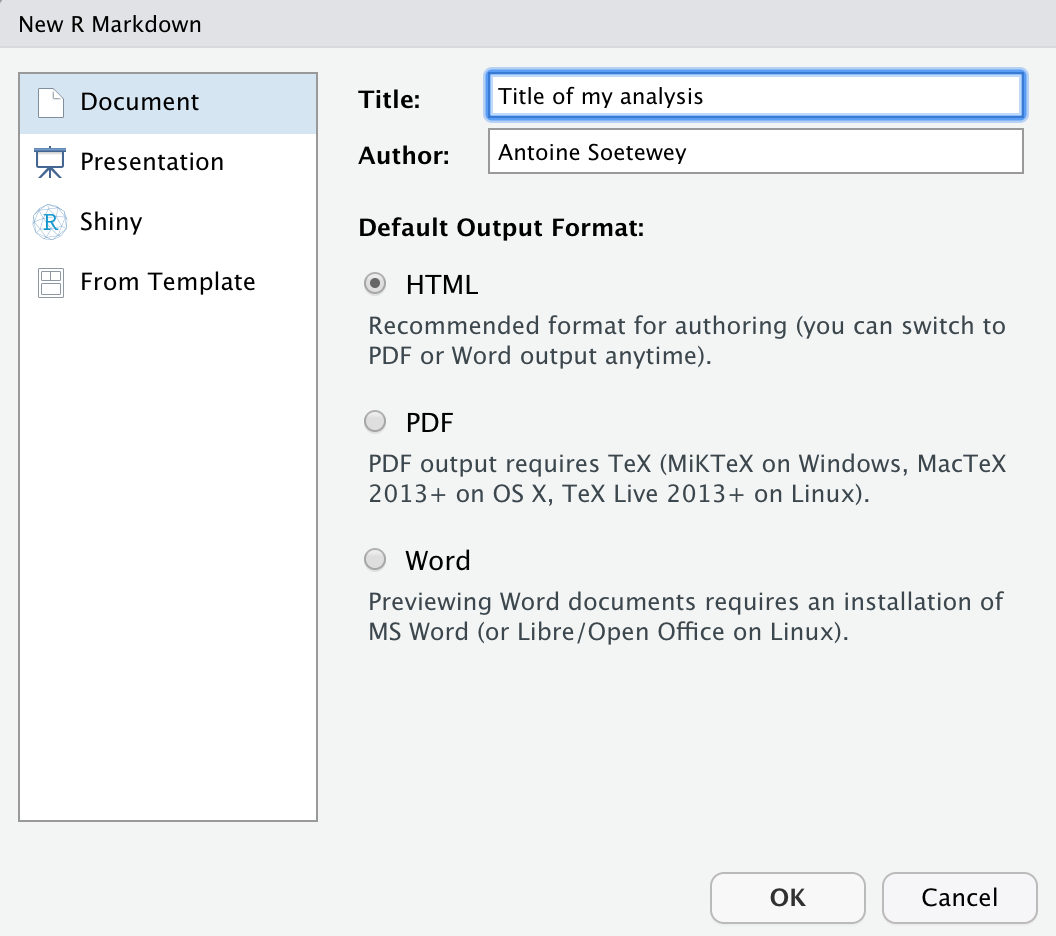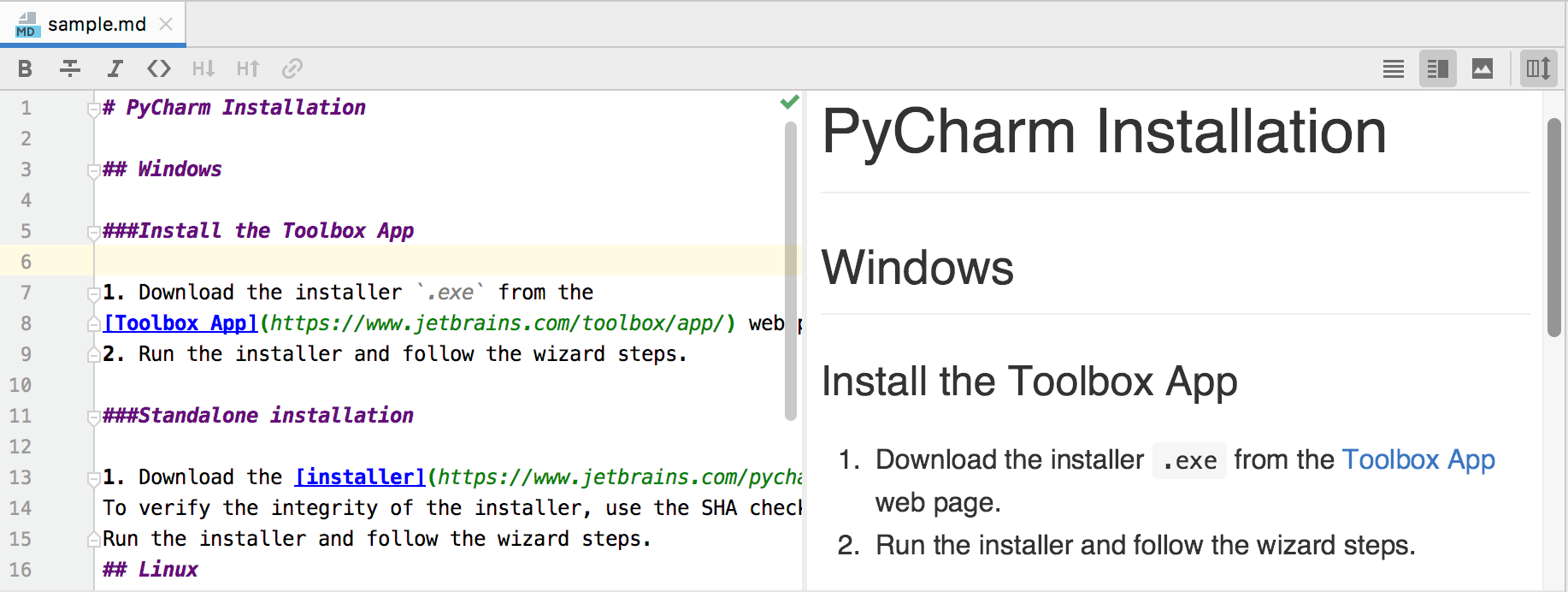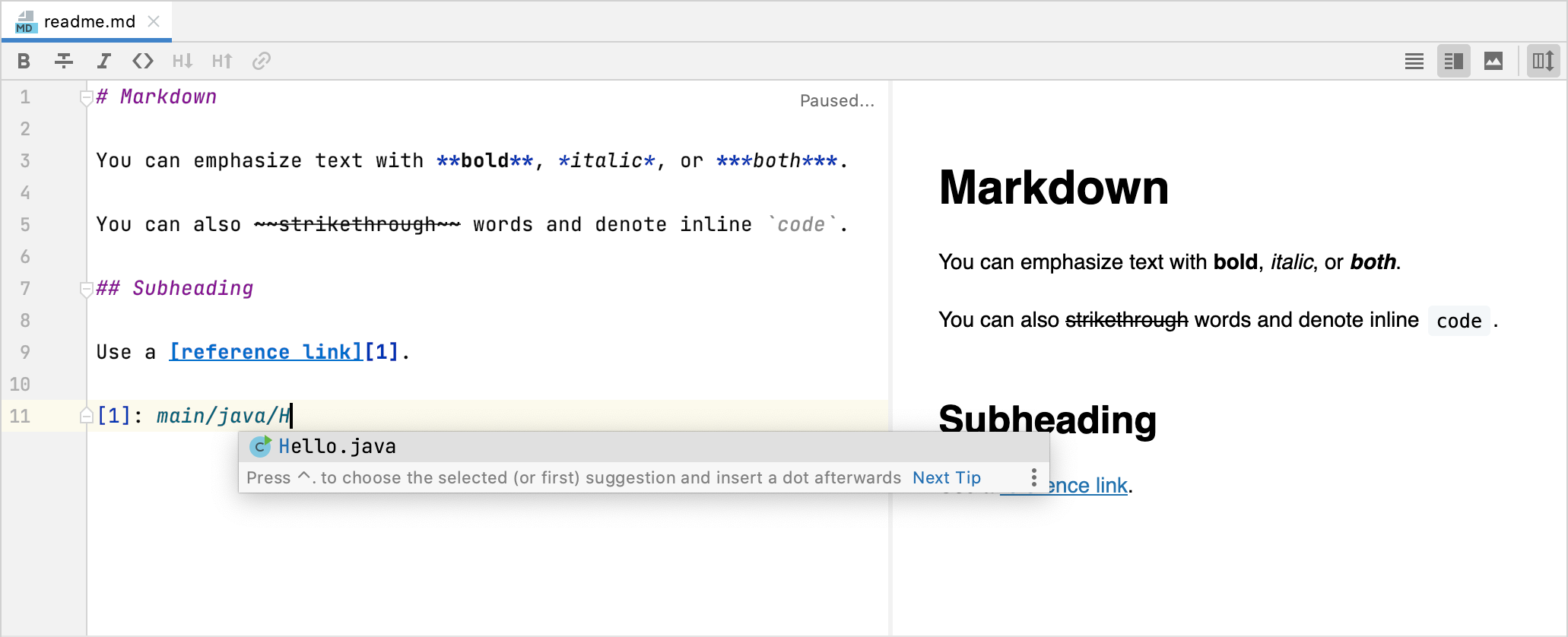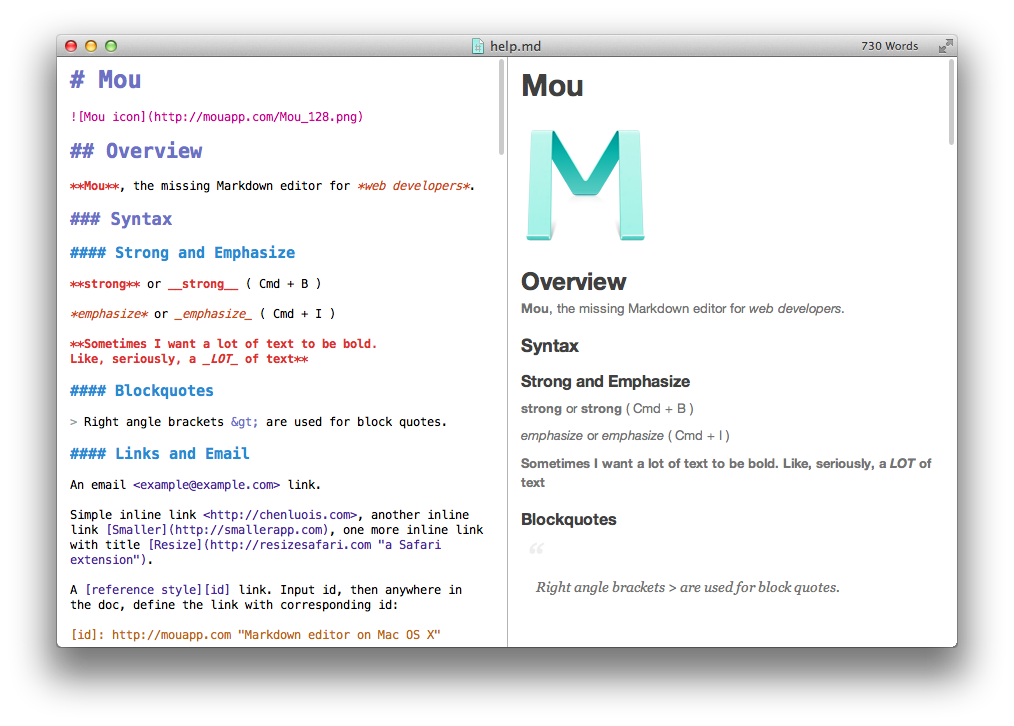Markdown is probably the most commonly-used plain text markup used online, and is easy to get started with. The specific flavor of Markdown that Rippledoc uses is Pandoc-Markdown. Here’s a quick example of some pandoc-markdown -formatted text: first as the source you’d put into your file, then rendered as html.
- Markdown File Example Online
- Markdown File Example Word
- Markdown File Example Excel
- Markdown Sample Files
- Markdown File Example Python
- Markdown File Example Software
- Markdown File Sample
Markdown File Example Online
And here’s that text rendered as html:
Markdown File Example Word

Paragraphs are separated by a blank line.
2nd paragraph. Italic, bold, and monospace. Itemized lists look like:
- this one
- that one
- the other one
Markdown-it demo. Html xhtmlOut breaks linkify typographer highlight CommonMark strict clear permalink html source debug. Fork me on GitHub. Turn your analyses into high quality documents, reports, presentations and dashboards with R Markdown. Use a productive notebook interface to weave together narrative text and code to produce elegantly formatted output. Use multiple languages including R, Python, and SQL. R Markdown supports a reproducible workflow for dozens of static and dynamic output formats including HTML, PDF, MS. Markdown is a lightweight and easy-to-use syntax for styling all forms of writing on the GitHub platform. What you will learn: How the Markdown format makes styled collaborative editing easy; How Markdown differs from traditional formatting approaches; How to use Markdown to format text; How to leverage GitHub’s automatic Markdown rendering.

This tutorial covers Markdown lists - Ordered, unordered, syntax with examples. Markdown isn’t like that. When you create a Markdown-formatted file, you add Markdown syntax to the text to indicate which words and phrases should look different. For instance, to denote a heading, you add a number sign before it (e.g., # Heading One).
Note that — not considering the asterisk — the actual text content starts at 4-columns in.

Block quotes are written like so.
They can span multiple paragraphs, if you like.

Use 3 dashes for an em-dash. Use 2 dashes for ranges (ex., “it’s all in chapters 12–14”). Three dots … will be converted to an ellipsis. Unicode is supported. ☺
An h2 header
Here’s a numbered list:
- first item
- second item
- third item
Note again how the actual text starts at 4 columns in (4 characters from the left side). Here’s a code sample:
As you probably guessed, indented 4 spaces. By the way, instead of indenting the block, you can use delimited blocks, if you like:
(which makes copying & pasting easier). You can optionally mark the delimited block for Pandoc to syntax highlight it:
An h3 header
Now a nested list:
First, get these ingredients:
- carrots
- celery
- lentils
Boil some water.
Dump everything in the pot and follow this algorithm:
Do not bump wooden spoon or it will fall.
Notice again how text always lines up on 4-space indents (including that last line which continues item 3 above).
Here’s a link to a website, to a local doc, and to a section heading in the current doc. Here’s a footnote 1.
Tables can look like this:
| Name | Size | Material | Color |
|---|---|---|---|
| All Business | 9 | leather | brown |
| Roundabout | 10 | hemp canvas | natural |
| Cinderella | 11 | glass | transparent |
(The above is the caption for the table.) Pandoc also supports multi-line tables:
| Keyword | Text |
|---|---|
| red | Sunsets, apples, and other red or reddish things. |
| green | Leaves, grass, frogs and other things it’s not easy being. |
A horizontal rule follows.
Here’s a definition list:
- apples
- Good for making applesauce.
- oranges
- Citrus!
- tomatoes
- There’s no “e” in tomatoe.
Again, text is indented 4 spaces. (Put a blank line between each term and its definition to spread things out more.)
Here’s a “line block” (note how whitespace is honored):
Line too
Line tree
and images can be specified like so:
Inline math equation: (omega = dphi / dt). Display math should get its own line like so:
[I = int rho R^{2} dV]
And note that you can backslash-escape any punctuation characters which you wish to be displayed literally, ex.: `foo`, *bar*, etc.

Pandoc also allows you to do a few more things besides. You can read more about that in the Pandoc Manual.
Some footnote text.↩
You can write content in regular Markdown files (e.g., files ending in .md).Jupyter Book supports any Markdown syntax that is supported by Jupyter notebooks.Jupyter Notebook Markdown is an extension of a flavour of Markdown calledCommonMark Markdown.It has many elements for standard text processing, though it lacks a lot of features used forpublishing and documentation.
Note
If you’d like a more in-depth overview and guide to CommonMark Markdown, seethe CommonMark Markdown tutorial.
This page describes some basic features of the Jupyter Notebook Markdown, and how toinclude them with your book.
Embedding media¶
Adding images¶
You can reference external media like images from your Markdown file. If you userelative paths, then they will continue to work when the Markdown files are copied over,so long as they point to a file that’s inside of the repository.
Here’s an image relative to the book content root
It was generated with this code:
See also
Images and figures for more information.
Adding movies¶
You can even embed references to movies on the web! For example, here’s a little GIF for you!
This will be included in your book when it is built.
Mathematics¶
For HTML outputs, Jupyter Book uses the excellent MathJax library,along with the default Jupyter Notebook configuration, for rendering mathematics from LaTeX-style syntax.
For example, here’s a mathematical expression rendered with MathJax:
Block-level mathematics¶
You can include block-level mathematics by wrapping your formulas in $$ characters.For example, the following block:
Results in this output:
Markdown File Example Excel
You can also include math blocks by using LaTeX-style syntax using begin{align*}.For example, the following block:
Markdown Sample Files
Results in:
Important
Markdown File Example Python
This requires the amsmath MyST extension to be enabled.
Markdown File Example Software
Extended Markdown with MyST Markdown¶
Markdown File Sample
In addition to CommonMark Markdown, Jupyter Book also supports a more fully-featured version of Markdown called MyST Markdown.This is a superset of CommonMark that includes syntactic pieces that are useful for publishing computational narratives.For more information about MyST Markdown, see MyST Markdown overview.
